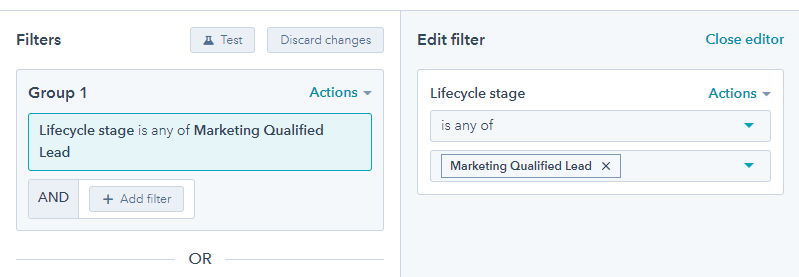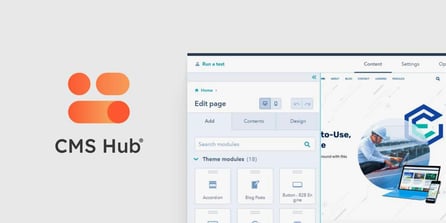HubSpot Contact Segmentation: How to Do It and Why You Should

You’ve built a great list of prospects and customers, but they’re all over the map in terms of needs and expectations. They’re at different stages of the buyer’s journey. Some fit one of your buyer personas, some fit another. They’re in related but different industries, don’t all want the same thing, and have different engagement levels. How do you best reach them all, increase their interest, and not lose them along the way?
Like so many challenges for marketing and sales, this one is critical to overcome. Also like many such challengeswe, HubSpot has the tools or integration for it. If you’re already on the platform, this is a great feature that allows you to segment your contact database by specific criteria, making it far easier to meet and even exceed your prospects’ needs and expectations.
Done well, segmenting your contacts yields higher customer loyalty, more conversions, better customer satisfaction and better revenue. It makes tending to your contacts infinitely easier, enables automated emails that resonate, drives better insights and better understanding who’s in your CRM, and creates a nice clean database that’s easier for everyone in your company to use.
The key is knowing how to best execute the strategy so it’s truly effective — and how to best leverage HubSpot’s technology.
HubSpot contact segmentation
Contact segmentation is just what it sounds like: you separate your contacts into specific groups based on a number of different traits. We recommend five effective ways to do this: by persona, lifecycle (or buyer’s journey) stage, industry, intent/interest, and engagement level.
There are plenty of other ways to segment contacts as well — or as HubSpot calls it, “Finding your who.” But organizing your contacts this way makes it far easier to manage and tend to these contacts, nurture relationships, and stay efficient. It’s an effective way to focus your efforts on each segment’s specific needs — be it marketing, sales, or services — and reach out with targeted hyper-personalized emails and other communications.
Is segmenting your contact worth the effort? We believe so. According to a study by HubSpot, sending targeted email campaigns to contacts segmented by buyer personas, for instance, increased the click-through rate by 16%. No question, that’s a substantial advantage. Also, once you get the hang of it, the process becomes second nature.
Segmenting contacts in HubSpot CRM, step by step
However you want to segment your contacts into in HubSpot, you’ll start by running through the same four steps:
- In HubSpot, go to “Contacts” and click on “Lists”
- Click on “Create List”, and select either “Active” or “Static” list type
- On the left sidebar, click “Add filter” button
- Select contact or company properties you want to include


When you’re in that Contact properties search bar, you’ll choose one of these five different ways to segment your contacts. Here are the steps for all five categories:
Persona
Who’s your perfect customer? If you’ve built up a bank of buyer personas based on research and data (hint: do this if you haven’t already), you can use these to segment your contacts and see potentially big benefits in customer acquisition and retention, attracting more high-value leads and driving more conversion.
In the Contact properties search bar, type in persona. Then, choose from the personas you’ve already created to categorize a contact.

Lifecycle stage
Where are your customer’s in the buyer’s journey? Are they leads? Prospects? Are they already your customers? Segmenting your contacts by lifecycle stage enables you to better tailor your communication to their expectations and needs. It can help you avoid irrelevant messaging — which can be the kiss of death at worst, and polish your reputation as a worthwhile partner that doesn’t want to waste anyone’s time.
In the Contact properties search bar, type in lifecycle stage. Then, either customize your own categories, or choose from HubSpot’s default lifecycle stage categories to filter a contact:
- Subscriber — signed up for your newsletter or blog.
- Lead — had an interaction with your company beyond a sign-up.
- Marketing qualified lead — qualified by the marketing team as ready for a sales call.
- Sales qualified lead — qualified by the sales team as a potential customer.
- Opportunity — involved in a possible deal with your company.
- Customer — at least one closed deal with your company.
- Evangelist — an avid advocate for your company.

Industry
Segmenting your contacts by industry can ensure you avoid sending the completely wrong materials to the wrong people. It can boost your credibility as insiders, experts, and empathetic partners — and separate you from competitors who don’t quite get it right. It’s a great way to get set up for automated email outreach. And it can make all the difference if you’re a business that serves different sectors: no one wastes time chasing down the wrong target.
In the Contact properties search bar, type in Contact’s industry. Then choose the right industry for your contact. (The industries provided reflect the standardized list used by HubSpot, LinkedIn, and Google Ads, but you can also customize and add as needed. Couldn’t be simpler.)

Intent/Interest
Are your contacts interested in your services, your products, your company? What are their intentions when it comes to working with you? Using HubSpot’s tool makes questions like this a lot easier to answer. It enables you to identify who is showing that level of interest and what they may be after — by noting who’s been visiting your website and what pages they have spent time (such as certain services), who has downloaded your pricing sheet, who has used one of your forms to book a meeting or get more information.
Note that this feature doesn’t use “intent/interest” as the search term. It looks at the behaviors that demonstrate it, including how many times a contact has taken action with a form submission.
In the Contact properties search bar:
- type in Number of form submissions to segment your contacts by how many form submissions they have completed — such as more than one. This is a default option.
- Or, to filter by pricing or contact us page, select has visited at least one URL containing — and then input pricing or contact.

Engagement
How a contact interacts with your emails is a fundamental indicator of how likely they are to want to interact further. HubSpot’s segmentation feature takes the mystery out of the metric, giving you a list of behaviors to track.
Once you’re in the Contact properties search bar, choose from the following (these are default options):
- Last activity date
- Marketing emails clicked
- Marketing emails opened — by total number opened
- Recent sales emails clicked date
- Sales emails opened — by total number opened
You’ve got the who. Here’s the why
Making your outreach and campaigns more efficient and effective isn’t just a matter of pressing a magic button. But HubSpot’s platform goes a long way to simplify the task. Here’s a breakdown of the top 7 benefits of doing contact segmentation this way:
1. Increased relevance
You send the right email to the right person at the right time.
2. Effective automation
Building automated workflows based on your segmented lists reduces the need to repeat the same tasks and speeds up the contacts process.
3. Better CRM data hygiene
Keeping a clean and well-organized database makes it easy for everyone to navigate.
4. Improved email reputation
Sending the right emails to the right contacts brings a significant increase in clicks and open rates.
5. Less unsubscribes
Effective communication diminishes a contact’s unsubscribe reflex. (We know that’s a bit of a mouthful, but it’s also a golden rule.)
6. More audience insights
Segmenting contacts builds a far better understanding of who’s in your CRM (customer relationship management) database, and what they need and expect.
7. More robust reporting
Knowledge is power — and reporting is what provides it. Segmenting your contacts provides a means to spot the trends and respond by fine-tuning your email campaigns.
Need a HubSpot partner?
Segmenting your contact database might seem a little overwhelming if you’re new to HubSpot. If you’ve been reading our HubSpot-focused posts for a while, you know we’re enthusiastic about the technology and its advantages for our clients.
If you want a capable partner to help you navigate it all, we’d love to chat. As a HubSpot Platinum partner agency, we can answer any questions you have. Reach out and find out how New Perspective can help your business grow.



